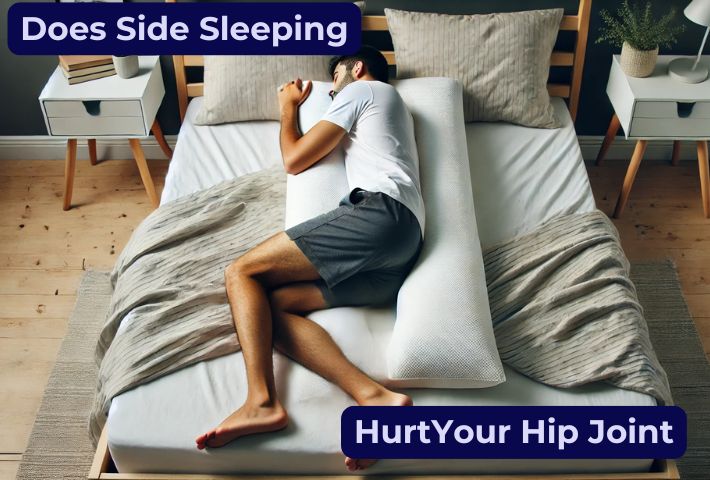
Why Does Side Sleeping Hurt Your Hip Joint? Understanding the Causes and Solutions
Introduction
It’s estimated that there are 4.8–5.6 billion side sleepers worldwide. Of that, studies and surveys suggest that 20-35% experience hip pain at some point. If you’ve ever woken up with a sore hip, you might be wondering: does side sleeping hurt the hip joint? In this guide, we’ll explore the potential causes of discomfort from side sleeping, ways to prevent it, and products that can help improve your sleep comfort.
Why Does Side Sleeping Hurt?
Side sleeping can contribute to hip pain due to several factors:
- Pressure Points: Lying on one side for extended periods can create pressure on the joint, leading to discomfort.
- Improper Spinal Alignment: A misaligned spine can cause tension in the hips and lower back.
- Mattress Firmness: Mattresses that are too firm or too soft may not provide the right kind of support, leading to pain.
- Preexisting Conditions: Conditions such as arthritis, bursitis, or hip impingement can be aggravated by side sleeping.
How to Prevent Hip Pain When Side Sleeping
- Choose the Right Mattress
A medium-firm mattress is often recommended. Look for options that offer:
- Pressure relief to cushion the hip area
- Supportive memory foam to maintain proper spinal alignment
- Hybrid construction (memory foam + innerspring) for balance between comfort and support
- Use a Supportive Pillow
The right pillow can make a significant difference in reducing hip pain. Consider:
- Knee Pillows: Placing a pillow between your knees can help keep the hips aligned.
- Body Pillows: A full-body pillow supports your entire body and reduces pressure points.
- Adjustable Loft Pillows: These allow customization to maintain proper neck and spinal alignment.
- Adopt a Healthier Sleeping Posture
- Avoid Curling Too Tightly: A fetal position with knees too close to the chest can strain the hips.
- Switch Sides Regularly: Alternating sides reduces continuous pressure on one hip.
- Stretch Before Bed: A gentle stretching routine can help relieve tension in the hip muscles.
Does Side Sleeping Hurt Hip Joint After Surgery?
If you’ve recently had hip surgery, sleeping on your side might be challenging. Here’s how you can ease into a comfortable position:
- Use a Wedge Pillow: Helps elevate and support the healing hip.
- Sleep with a Pillow Between Your Legs: Maintains proper alignment and reduces strain.
- Consult Your Doctor: Always follow medical recommendations regarding sleep positions post-surgery.
Health Benefits and Risks of Side Sleeping
Benefits:
- Improved digestion
- Reduced snoring and sleep apnea symptoms
- Better spinal alignment (with proper support)
Risks:
- Hip and shoulder pain if unsupported
- Poor circulation if pressure is not evenly distributed
Accessories for Side Sleepers
To maximize comfort and minimize hip pain, consider these sleep accessories:
- Orthopedic Mattresses: Designed specifically for side sleepers.
- Ergonomic Pillows: Help align the neck and spine.
- Mattress Toppers: Provide extra cushioning to relieve pressure points.
Sleep Ergonomics and Therapeutic Solutions
- Memory Foam Contouring: Supports natural curves of the body.
- Adjustable Bed Frames: Allow customization of sleeping positions.
- Weighted Blankets: Provide additional support and relaxation.
Conclusion
Does side sleeping hurt hip joint? While side sleeping can contribute to hip pain, the right mattress, pillows, and posture adjustments can prevent discomfort.
Looking for the best side sleeper products? Check out our top recommendations for pillows, mattresses, and accessories designed for side sleepers.
